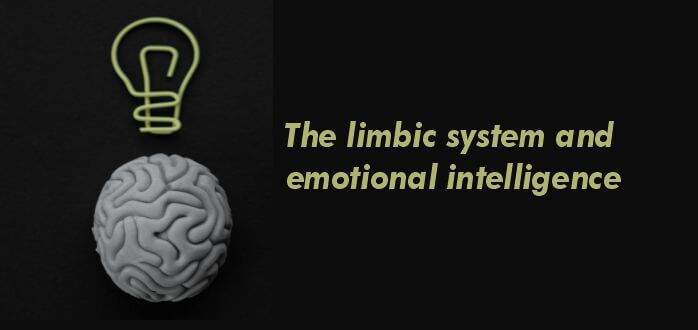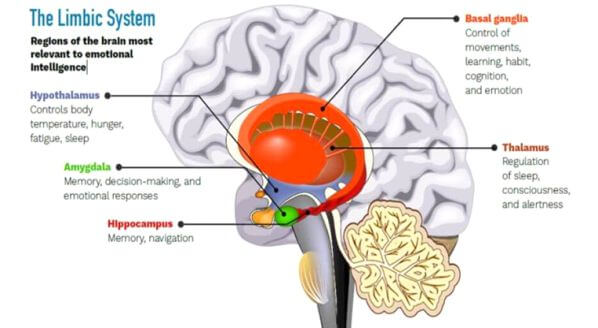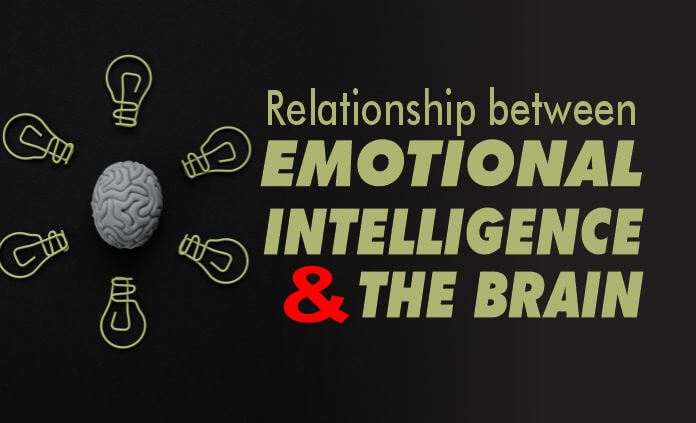Last updated on April 25th, 2025 at 03:01 am
Emotional intelligence and the brain are the two determinants of how you interact with your emotions and their effects on you. Here is how they do that behind the scenes.
The brain as the hub of emotions has many parts that determine what emotions are to be experienced depending on the trigger.
Studies have shown that emotional intelligence which is the mastery of emotions and their application in our day-to-day lives is crucial for success in both personal and professional life.
People with high emotional intelligence are better able to manage stress, communicate effectively, and make sound decisions, they are also more likely to be successful in relationships and have better mental health.
And this is reflected in the brain.
In this unusual post, we are going to look at how the brain influences emotional intelligence and the outward responses we see as feelings and responses.
Here is a complete article on emotional intelligence.
How does emotional intelligence work in the brain?
It turns out that EI is closely linked to specific parts of the brain that are responsible for processing emotions.
We pick up information from our surroundings through the sense organs -we see, smell, hear, taste, feel and touch.
The information we get from these senses travels from cell to cell through the super highway – the spinal cord, until it gets to our brains before we know what we want to do with them.
Here are the parts that interplay with each other to bring about emotions and their subsequent mastery and application by an individual.
- The limbic system
- The prefrontal cortex (PFC)
- The spinal cord
The limbic system and emotional intelligence

A limbic system is a group of structures in the brain that controls emotions, behavior, and survival instincts.
It includes the amygdala, hippocampus, hypothalamus, and other brain regions.
There is a strong connection between the limbic system and EI, as emotions play a vital role in our decision-making process.
The limbic system helps us process and interpret emotional information from our surroundings and responds with an appropriate emotional response.
Related: The Development of Emotional Intelligence
People who are emotionally intelligent have increased activity in the PFC which has the task of regulating emotional responses in the limbic system.
Studies have also shown that damage or dysfunction of the limbic system can lead to emotional disturbances and difficulty with emotional intelligence.
Therefore, it can be concluded that the limbic system is a crucial component of emotional intelligence.
The prefrontal cortex and emotional intelligence

Another important area is the prefrontal cortex (PFC), the part of the brain located at the front of the skull.
The prefrontal cortex is responsible for executive functions or higher-level thinking or cognitive control, problem-solving, memory, emotions, impulse, decision-making, self-control, and social interaction.
Researchers suggest that the PFC plays a crucial role in emotional intelligence by regulating emotional responses, inhibiting inappropriate behaviors, and recognizing and interpreting social cues.
Information passing through the limbic system creates an emotional reaction to the source of the information before they reach the frontal brain.
Related: How To Develop Emotional Intelligence Training For Your Team
Research has shown that people with high emotional intelligence have more activity in the prefrontal cortex and less activity in the amygdala.
This suggests that they are better able to regulate their emotions and respond appropriately to different social situations.
The PFC is not wired to alter or stop the emotion felt in the limbic system, instead, the two areas communicate constantly.
Also, people with stronger PFC activity tend to have higher emotional intelligence, while those with lower PFC activity have low emotional intelligence.
Moreover, studies have shown that training targeted toward PFC can enhance emotional intelligence
The spinal cord and emotional intelligence
It is common knowledge that the spinal cord is a key component of the nervous system which transmits signals to and fro the brain.
It plays an important role in regulating both physical and emotional responses.
While emotions are primarily regulated in the limbic system of the brain, the connection between the limbic system and the spinal cord suggests that the spinal cord may also play a role in emotional regulation and intelligence.
However, more research is needed to fully understand the relationship between the spinal cord and emotional intelligence.
These parts of the brain work together to reinforce emotional intelligence. Any damage to any of these parts responsible for emotions would translate to a loss of the ability to recognize or identify emotions.
Related: 15 Phrases That Make You Emotionally Smart
The neurological and psychological base of emotional intelligence
At a point, psychology and the brain have to meet and interact for us to be able to interpret what transpires in a way that humans can understand.
Here are some of the key psychological and neurological foundations of emotional intelligence:
Emotion recognition: One’s ability to recognize emotions in oneself and others.
Emotion regulation: One’s ability to manage emotions effectively in oneself and others.
Attention: One’s ability to focus attention on relevant inputs and ignore distractions.
Neuroplasticity: The brain’s ability to adapt and change in response to experiences and learning.
Social cognition: One’s ability to understand and interpret social cues in others.
Self-awareness: One’s ability to understand one’s own emotions, thoughts, and motives.
Empathy: One’s ability to understand and share the feelings of others.
Researchers have found that these skills can be developed and trained over time, and they play a critical role in many aspects of our personal and professional lives.
Related: The Origin of Emotional Intelligence, and Frequently Asked Questions
Frequently asked questions about emotional intelligence and the brain
What side of the brain is emotional intelligence?
Emotional intelligence is not limited to a specific side of the brain. Emotions and their regulation involve multiple regions in the brain and their interconnections.
However, certain brain areas such as the amygdala, prefrontal cortex, anterior cingulate cortex, and insula are heavily involved in emotional processing and regulation, which are important components of emotional intelligence.
What is the science behind emotional intelligence?
Experts agree that there is observable evidence of scientific explanation of emotional intelligence.
This hinges on the fact that emotional intelligence scores can be used to identify other outcomes that can be measured as intelligence.
Scientific evidence also supports the opinion that High emotional intelligence has a direct effect on positive relationships and successful careers.
Is the left side of the brain responsible for emotional intelligence?
Recent research suggests that emotional intelligence is a complex cognitive ability that involves the integration of several brain regions, including the prefrontal cortex, amygdala, and hippocampus.
Both the left and right sides of the brain play a significant role in processing emotional information, particularly in terms of recognizing emotional cues in others’ facial expressions and body language.
Therefore, emotional intelligence may not be solely controlled by the left side of the brain.
What part of the brain controls emotions?
The limbic system, particularly the amygdala, and hippocampus, is responsible for controlling emotions.
The prefrontal cortex also plays a significant role in regulating emotions and making decisions related to emotions.
Conclusion
The relationship between emotional intelligence and the brain is a charged one with the spinal cord as the super highway.
Understanding the relationship helps us more to know how to identify and respond to these emotions and the appropriate application required.
The limbic system, prefrontal cortex, and spinal cord are the parts that interact to make us feel, interpret and respond to emotions.
The brain and its peripherals can however be trained by an individual to become emotionally intelligent.
REFERENCES:
Pious Clements is the insightful voice behind "The Conducts of Life" blog, where he writes about life ethics, self-development, life mastery, and the dynamics of people and society.
With a profound understanding of human behaviuor and societal dynamics, Pious offers thought-provoking perspectives on ethical living and personal growth.
Through engaging narratives and astute observations, he inspires readers to navigate life's complexities with wisdom and integrity, encouraging a deeper understanding of the human experience and our place within society.

